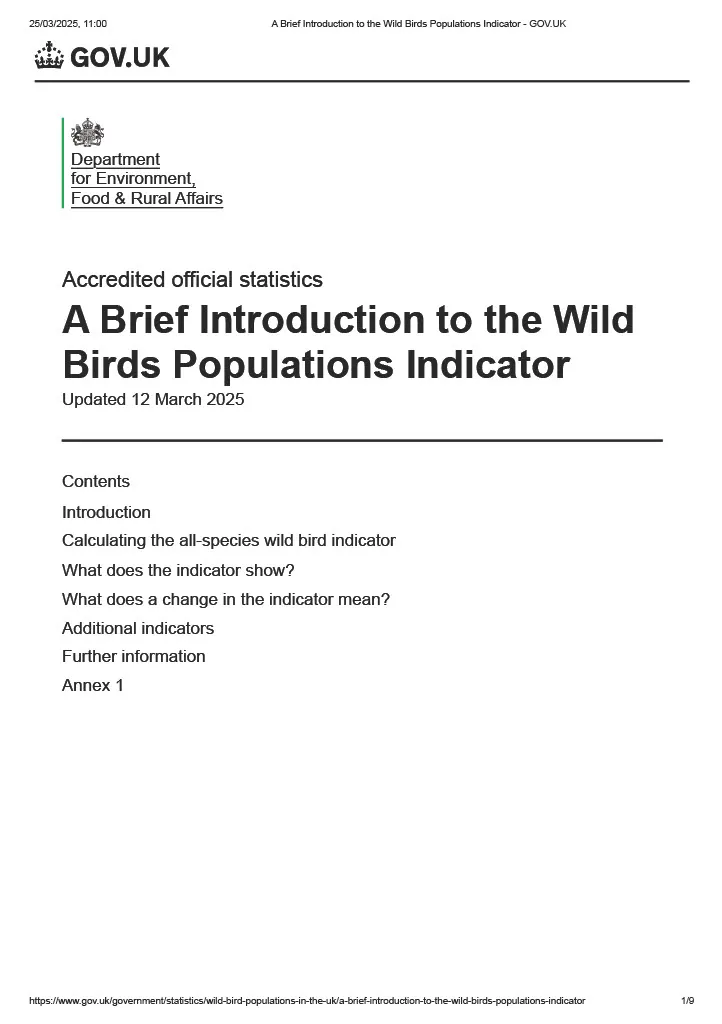BTO publishes various reports, from those covering the annual results of core surveys, through scientific studies, and on to those produced in partnership with other organisations. Many of these are published as BTO Research Reports. You can access all of our reports from here, though note that we are currently updating the reports section, working backwards through time to bring all of the report pages into a consistent format. You can read our Annual Report and Accounts in the Governance section.
Search settings
Oil pollution mortality of British and Irish seabirds during the winter of 1980-81 analysed by colony of origin and age at death
01.01.81
Reports
A field validation of some Common Birds Census techniques
01.01.81
Reports
Population level and nesting biology of the Stock Dove Columba oenas in Great Britain, 1930-1980
01.01.81
Reports
Wild Bird Indicators

The Wild Bird Indicators are part of the government’s suite of biodiversity indicators, alongside indicators related to measures of habitat condition, air pollution, river water quality, extent of protected areas, spread of non-native species as well as the state of butterflies and other wildlife. The indicators are produced annually for Defra and NatureScot by BTO, together with RSPB and JNCC.The Wild Bird Indicator is an accredited Government Official Statistic, and further information on its construction and how it is developed can be found on the government website. The Wild Bird Indicators are based on population trends of bird species that are native to, and breed or spend the winter in, the UK. These population trends are calculated largely using data that is collected by volunteers, as part of national bird monitoring schemes like the BTO/RSPB/JNCC Wetland Bird Survey and the BTO/JNCC/RSPB Breeding Bird Survey. The indicators therefore link the efforts of our dedicated volunteers directly to a policy-relevant assessment of the state of nature.The indicators group breeding birds by habitat: farmland, woodland, uplands, waterways and wetlands, and marine and coastal areas, and most are based on datasets that stretch as far back as 1970. This means that indicators are a useful tool for examining how birds associated with different landscapes have fared over many decades. The indicators also report on the state of our internationally important wintering (i.e. non-breeding) wetland and coastal birds.
Reports